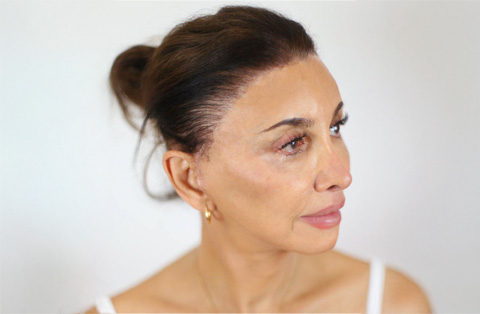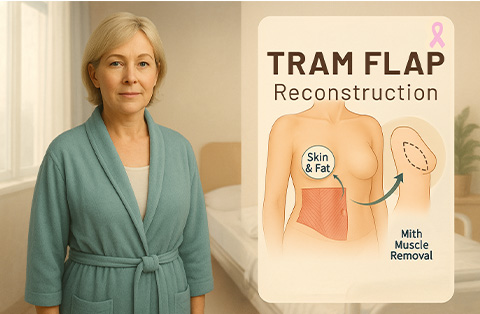Understanding the Basics of Maxillary Osteotomy
Maxillary osteotomy is a surgical procedure targeting the upper jaw, or maxilla. Surgeons perform this operation to correct misalignments such as underbites, overbites, and crossbites.
The process involves cutting the bone to move the jaw into a more favorable position. This surgery aims to improve jaw function and facial aesthetics, creating a harmonious appearance. It addresses significant skeletal discrepancies that braces alone cannot correct.
Ideal for patients with severe jaw misalignments, maxillary osteotomy can significantly enhance both the functionality of the bite and the symmetry of the face, boosting the patient's confidence and quality of life.
What is Maxillary Osteotomy?
Maxillary osteotomy is a surgical procedure that corrects misalignments of the upper jaw. Surgeons cut and reposition the maxilla to address issues like overbites, underbites, and crossbites. This operation improves jaw function and facial balance, enhancing both appearance and oral health.
When is Upper Jaw Surgery Needed?
Maxillary osteotomy is needed when patients have severe jaw misalignments that braces alone cannot correct. These include overbites, underbites, and crossbites that affect chewing, speaking, and facial aesthetics. It is also considered for those with congenital defects or after trauma. The surgery aims to improve function and appearance.
Overview of the Surgery Process for Upper Jaw
The surgery process for the upper jaw, known as maxillary osteotomy, begins with careful planning and imaging to map out the desired jaw position. Surgeons then make incisions inside the mouth to access the maxilla.
They cut the bone, allowing them to move the jaw to its new position. Special screws and plates secure the jaw in place. The procedure typically requires general anesthesia and may include a hospital stay.
Post-surgery, patients follow a recovery plan involving soft diets and limited physical activity. The goal is to improve jaw alignment, enhancing both function and facial aesthetics.
Le Fort I Osteotomy vs. Other Types: What's the Difference?
Le Fort I Osteotomy focuses on the upper jaw, correcting its position horizontally. Other types, like Le Fort II and III, involve more complex adjustments, affecting the midface and cheekbones. These variations address different severities and areas of facial deformities, each tailored to specific alignment needs.
Type | Area Addressed | Complexity |
Le Fort I | Upper jaw | Less complex, horizontal adjustments |
Le Fort II | Upper jaw and midface | More complex, vertical and horizontal adjustments |
Le Fort III | Midface and cheekbones | Most complex, comprehensive facial restructuring |
The Role of Orthognathic Surgery in Correcting Jaw Issues
Orthognathic surgery stands as a pivotal solution for correcting jaw issues. It aims to realign misaligned jaws, addressing both functional and aesthetic concerns. This surgical approach targets problems that braces alone can't fix, such as severe overbites, underbites, and facial asymmetry.
By repositioning the jaw, orthognathic surgery improves chewing, speaking, and breathing functions. It also plays a crucial role in enhancing facial balance, contributing to a more proportional and harmonious appearance. Patients undergoing this surgery often experience significant improvements in their quality of life, including boosted self-esteem and comfort.
Orthognathic surgery requires meticulous planning and collaboration between surgeons and orthodontists to achieve optimal outcomes. It embodies a transformative process, not just physically but also psychologically, marking a significant step towards resolving complex jaw issues and fostering overall well-being.
Pre-surgical Preparation: What You Need to Know
Pre-surgical preparation for orthognathic surgery involves several steps. Patients undergo detailed imaging tests, like X-rays and CT scans, to plan the surgery. Orthodontic braces may align the teeth beforehand. Patients also meet with the surgical team to discuss risks, outcomes, and recovery. A healthy diet and quitting smoking are crucial for optimal healing.
Consulting with Oral and Maxillofacial Surgeons: The First Step
Consulting with oral and maxillofacial surgeons marks the first step in the journey towards correcting jaw issues. During this consultation, surgeons evaluate your condition, discuss treatment options, and outline the surgery process. They ensure you understand the benefits, risks, and recovery expectations, setting the foundation for a successful outcome.
Orthodontic Work: Preparing Your Teeth for Surgery
Orthodontic work prepares your teeth for surgery by aligning them properly. This step often involves wearing braces months before the operation. The goal is to ensure that your teeth will fit together correctly after the jaw repositioning. This preparation is crucial for achieving the best functional and aesthetic results.
Understanding the Role of Imaging and Models in Planning Your Surgery
Imaging and models play a crucial role in planning your surgery. They provide detailed views of your jaw's structure, helping surgeons design a precise surgical plan. These tools enable the prediction of surgical outcomes, ensuring that adjustments to the jaw align perfectly for optimal function and appearance.
Recovery and Post-surgical Care for Maxillary Osteotomy
Recovery and post-surgical care for maxillary osteotomy are vital for healing and achieving desired outcomes.
After surgery, patients often experience swelling and discomfort, managed with medication.
A liquid or soft diet is necessary initially to ease strain on the jaw. Regular follow-up appointments monitor healing and adjust any orthodontic appliances.
It's crucial to maintain oral hygiene gently but thoroughly to prevent infections.
Patients should avoid strenuous activities and follow specific instructions on caring for the surgical site.
The recovery period varies but usually spans several weeks, during which patients gradually return to normal activities. Adhering to the surgeon's advice on diet, oral care, and activity levels ensures a smoother recovery.
Proper care and patience are essential for the healing process, leading to successful long-term results of improved jaw function and appearance.
Risks and Complications
Risks and complications can occur with maxillary osteotomy, like any surgery. Understanding these potential issues is crucial. Patients might face infections, bleeding, or nerve damage. The jaw might not heal as expected, leading to misalignment. It's essential to discuss these risks with your surgeon.
Infection
Bleeding
Nerve damage
Poor healing
Misalignment
Frequently asked questions
What is a LeFort 1 osteotomy of the maxilla?
A LeFort 1 osteotomy of the maxilla is a surgical procedure that repositions the upper jaw by cutting the bone above the teeth. Surgeons then move the jaw to improve alignment, function, and appearance. This surgery addresses issues like overbites, underbites, and open bites.
What is the difference between Bsso and LeFort?
The difference between BSSO and LeFort lies in the jaw they target. BSSO (Bilateral Sagittal Split Osteotomy) adjusts the lower jaw, while LeFort procedures reposition the upper jaw. BSSO corrects mandibular discrepancies, and LeFort addresses maxillary issues, improving alignment and function.
What is the recovery time for a maxillary osteotomy?
The recovery time for a maxillary osteotomy typically ranges from 6 to 12 weeks. During this period, patients gradually return to normal activities. Full healing, including bone stabilization and complete dental alignment with orthodontics, might take up to a year.
What is the LeFort 2 maxillary osteotomy?
The LeFort 2 maxillary osteotomy targets the upper jaw and nose region. It involves cutting the bone above the teeth and through the nose's base, allowing for vertical and horizontal repositioning. This surgery addresses more complex facial structure issues than LeFort 1.
What is LeFort 3 surgery?
LeFort 3 surgery is an orthognathic procedure that repositions the entire midface, including the cheekbones and nose. It corrects severe facial deformities by cutting bones higher up in the facial structure. This complex surgery improves both the function and aesthetics of the mid and upper face.
Is maxillary osteotomy painful?
Maxillary osteotomy involves discomfort and swelling during the initial recovery phase. However, surgeons manage pain effectively with medications. Most patients find the discomfort manageable and notice a significant decrease in pain levels within the first few weeks after surgery.
Why do people get maxillary osteotomy?
People get maxillary osteotomy to correct severe jaw misalignments that affect their bite, speech, and facial appearance. This surgery improves chewing function, speech clarity, and facial symmetry. It's often recommended for those with overbites, underbites, crossbites, or congenital defects affecting the upper jaw.
Is osteotomy surgery safe?
Osteotomy surgery is generally safe when performed by experienced surgeons in properly equipped facilities. Like all surgeries, it carries risks, but careful planning, modern techniques, and post-surgical care minimize these. Discussing potential risks and benefits with your surgeon can help ensure a safe outcome.






